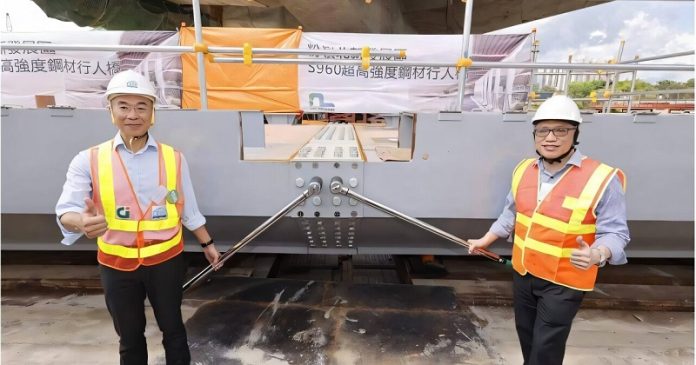
Engineers at The Hong Kong Polytechnic University (PolyU) have developed an innovative welding technology that makes it easier to use S960 steel—a type of ultra-high-strength steel—in bridge construction.
Known for its lightweight yet incredibly strong properties, S960 steel could be a game-changer for building high-rise structures, long-span bridges, and other large-scale projects.
However, traditional welding methods can weaken S960 steel, reducing its strength and flexibility by as much as 20-30%, limiting its applications.
The breakthrough came from PolyU’s Department of Civil and Environmental Engineering, where researchers discovered a way to control the heat during welding.
By precisely managing the heat applied to the steel, they were able to preserve its mechanical properties, allowing it to retain its full strength after welding.
This new welding technology has already been applied in a footbridge in the Fanling North New Development Area in Hong Kong, marking the first time S960 steel has been used in a public works project in the city.
Led by Prof. Kwok-fai Chung, the team’s work focused on finding the best range of heat energy for different joint designs and thicknesses of S960 steel.
This careful approach helps to reduce the negative effects of welding on the steel, which allows it to be used effectively in bridge construction and other challenging applications. Working with a local steel fabricator, the team optimized the welding process to suit different project needs, ensuring high-quality and durable joints.
The benefits of using S960 steel are significant. It requires less material to achieve the same strength as traditional steel like S355, making the structure lighter and more efficient.
In the Fanling North project, the engineers used S960 steel to create two segments of the footbridge, designed as stiffened box girders, which were built and assembled at the site with minimal impact on their durability.
This reduced the weight of the bridge, which in turn lowered the number of foundation piles needed and reduced carbon emissions, enhancing the sustainability of the project.
Professor Chung emphasized that their research aims to deepen understanding and provide guidance for engineers on using high-strength steel like S960 in construction.
He noted that the Fanling North project serves as a valuable example for future construction projects and will help set guidelines for the safe and effective use of S960 steel in bridge and infrastructure projects.
Beyond Fanling North, this technology has been implemented in other major projects in Hong Kong, including the Double Arch Steel Bridge in Tseung Kwan O and the steel roofs of Kowloon Tsai Swimming Pool and Yuen Long Stadium. These projects illustrate the potential of S960 steel to reshape modern construction, making it stronger, lighter, and more environmentally friendly.
With this new welding method, S960 steel could become a key material in infrastructure around the world.



